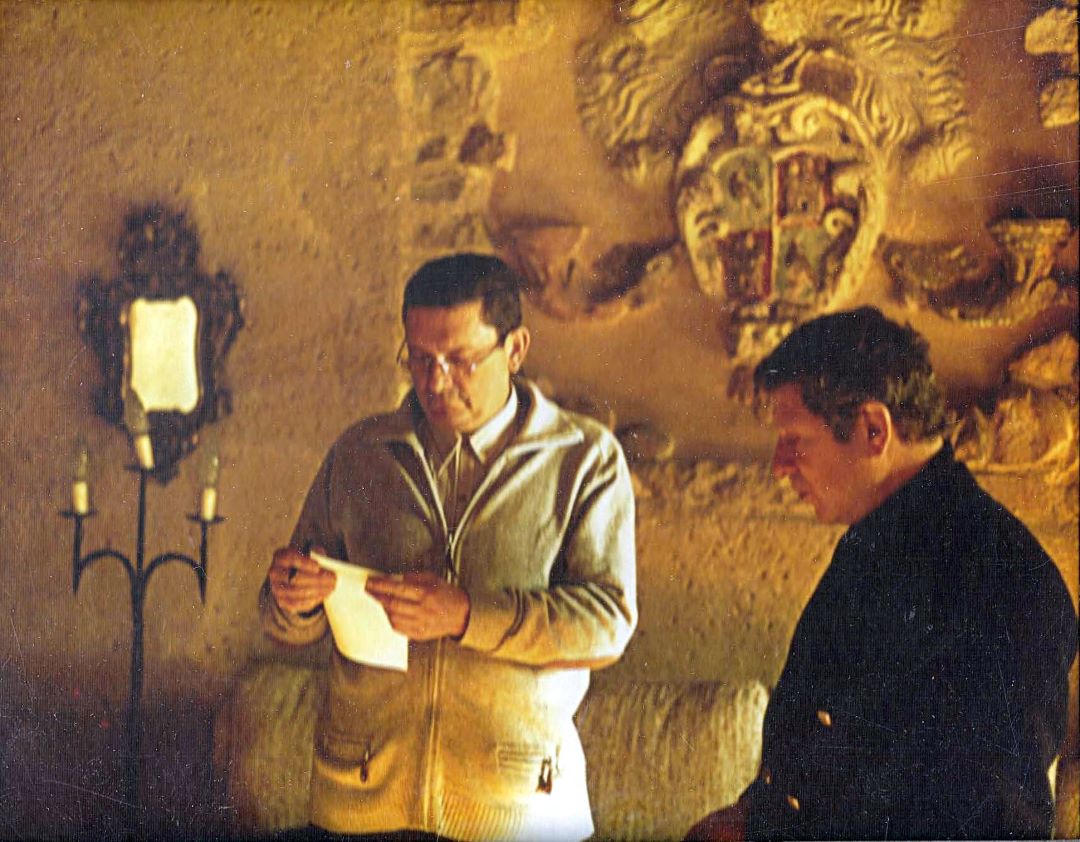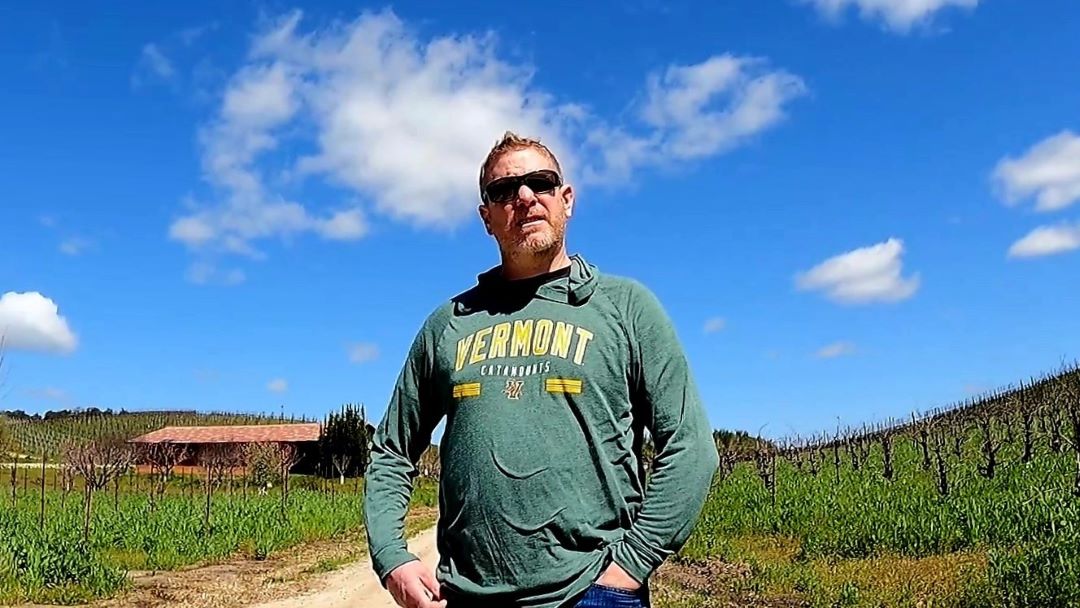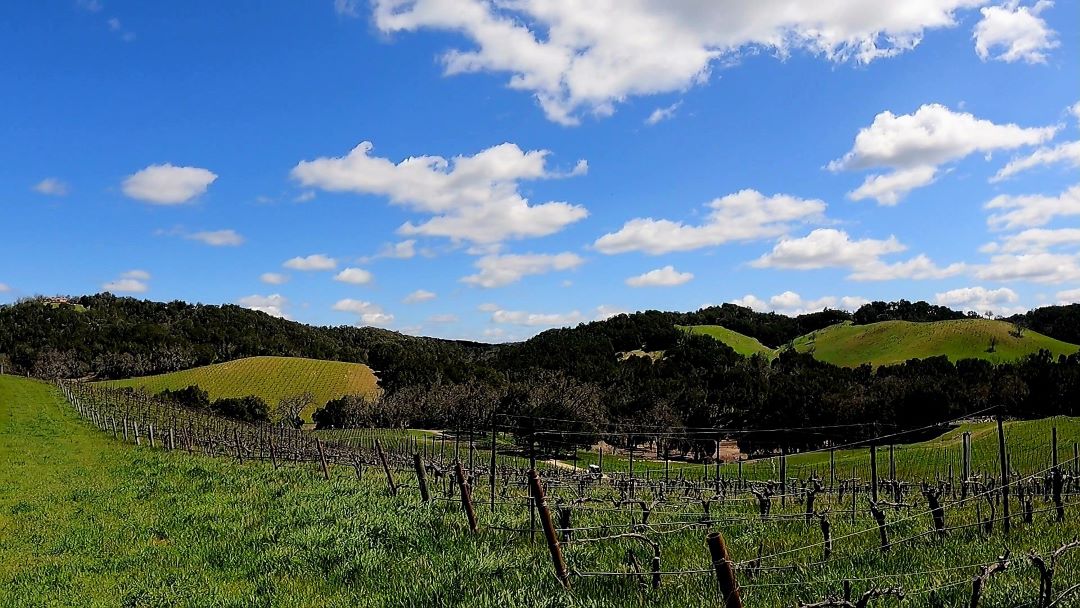Browse using the new Vinous website now. Launch →
Printed by, and for the sole use of . All rights reserved © 2015 Vinous Media
Beyond Expectations: Twenty-Three Years of Tablas Creek’s Esprit de Tablas
BY ERIC GUIDO | JULY 22, 2025
Tablas Creek has established itself as an icon in California and beyond, one of the top sources for balanced, ageworthy domestic wines. Moreover, they’ve done so from the least likely of places: the arid and scorching region of Paso Robles, where annual rainfall typically totals only 20 inches and an average of 16 days each year crest 100°F. Vintage after vintage, Tablas Creek’s Rhône-inspired selection of blends and single-variety wines proves Paso’s potential for producing wines with modest alcoholss, site-transparent character and varietal typicity. Even as the region battles climate change, Tablas Creek proves that careful vineyard management and a gentle touch in the cellar can yield benchmark wines of the highest quality.
However, one wine in the Tablas stable stands out: the Esprit de Tablas, which was known as Esprit de Beaucastel until 2011, when the name was changed to better separate the brand from Beaucastel. Since its first vintage in 2000, the Esprit has contained varying amounts of Mourvèdre, Grenache, Syrah and Counoise in an attempt to recreate the Château de Beaucastel’s Châteauneuf-du-Pape through the a Paso Robles lens. Esprit pays homage to the joint partnership between the Haas and Perrin families, who had the insight and courage to invest in Paso Robles over 30 years ago. The Esprit de Tablas proves time and time again that it can mature positively for two decades or more, and it remains a fantastic value in the market. Esprit has evolved over the last 23 years due to stylistic trends, a changing climate and farming practices but has never wavered from the inspiration that started it all—a belief in Paso Robles terroir and a love for Rhône varieties.
A Short History of Tablas Creek
Tablas Creek Vineyard was founded in 1989. Robert Haas of Vineyard Brands and Jean-Pierre Perrin of Château de Beaucastel conceived the project while traveling through California visiting many of the region's early pioneers in the 1970s. The wine scene in California was very different at the time, with more focus on Burgundian varieties. The Perrin and Haas families were convinced that California's Mediterranean climate could produce great Rhône-inspired wines, but they would need to find the perfect location to do so—one with high-calcium soils, a long growing season and moderate nighttime temperatures. The search lasted four years, from 1985 to 1989. The Perrins ultimately settled on the western reaches of Paso Robles, just 12 miles from the Pacific Ocean in what is now the Adelaida District.

Jacques Perrin and Robert Haas at Château de Beaucastel in 1973.
In 1989, the two families purchased a 120-acre parcel on shallow, rocky limestone soils at an average elevation of 1,500 feet. To assure the best vine material, they imported cuttings from Château de Beaucastel, which, after quarantine and nursery propagation, were finally planted across 60 acres in 1994. The Haas family has managed the property since day one, implementing organic farming practices from the outset. The initial plan was to craft one red and one white wine from the site, but this changed in 2000, when current winemaker Neil Collins stepped fully into the picture . Collins had been working at Adelaida Cellars, where Tablas Creek made their wines before constructing a winery of their own in 1997. After a year working at Château de Beaucastel to gain a thorough understanding of their methodologies and practices, Collins returned to Paso in 1998 to take over Tablas Creek’s new cellar.

Winemaker Neil Collins has been part of the team at Tablas Creek since day one.
Issues began to arise, as the Perrin and Haas families quickly realized they had overestimated market readiness for Rhône blends containing varieties that were at the time unfamiliar to American consumers. Their focus on the vineyards paid off in wine quality, but at the cost of an emphasis on marketing. Sitting on a large amount of unsold inventory in 2000, the team broke up their single red wine into two wines: the earlier-drinking Côtes de Tablas and the prestige cuvée Esprit de Beaucastel. The Esprit would use the Beaucastel name to take advantage of the brand’s international reputation. Initially, Esprit utilized 60% of the fruit from the estate vineyards, whereas today the cuvée only includes the top 15-20% of the estate's fruit. With this change also came an emphasis on micro-vinifications of individual blocks, as well as the planting of another 20 acres of vineyards, which brought the total to 80 acres planted.

Jason Haas, the second-generation proprietor of Tablas Creek.
Proprietor Jason Haas, who had worked past harvests and spent time in the tech industry, came on board in 2002 to lead a marketing push. That same year, Tablas Creek added a tasting room to the cellar and began showcasing single-variety wines to complement the selection of blends. They also opened their mailing list and became involved in local organizations like the Wine Country Alliance. Tablas Creek’s emphasis on the vineyards continues to this day; they implemented full biodynamic principles in 2010 and became the first winery in the world to achieve Regenerative Organic Certified (ROC) status in 2020.
Esprit de Beaucastel/Esprit de Tablas Over the Years
It has long been clear that the Esprit de Tablas can age extremely well after encountering many older vintages over the years, but I had never experienced the oldest vintages, nor had I tasted recent releases alongside past vintages to gain insight into their aging curve. In requesting this vertical from the team at Tablas Creek, I wanted to emphasize to Vinous readers that the Esprit de Tablas can very easily be a 20-year wine. Throughout the Esprit's 24-year history, three core winemaking principles have remained constant: native fermentations, the avoidance of stems or whole clusters, and 22 months of maturation in 1200-gallon foudres. I’ve included further details as to the other variables that informed each vintage below. This retrospective spanning 18 vintages provided a great opportunity to follow the Esprit’s evolution over the years.
The inaugural 2000 Esprit de Beaucastel is a perfect example of how well this wine can age, still vibrant with subtle tertiary notes and several years of life ahead of it. Notably, this vintage comprised 60% of the estate's fruit and featured the lowest proportion of Mourvèdre until 2021. Even from the early 2000s, Esprit consistently exhibited excellent color, a characteristic Jason Haas attributes to the presence of Mourvèdre in the blend. Frost decimated the Mourvèdre harvest in 2001, so no Esprit was made in that year.

Fifteen of the eighteen vintages I tasted of Tablas Creek’s Esprit.
Subsequent vintages, including 2002, 2003, 2004 and 2005, further reinforce my assessment of Esprit’s aging potential. Now over two decades old, these wines largely demonstrate remarkable freshness. In 2002, Tablas Creek raised its quality standards by reducing Esprit production. The team also significantly decreased the Grenache component through 2004, as younger-vine fruit contributed undesirable tannins. During these years, Mourvèdre consistently made up approximately 50% of the blend. The 2004 Esprit de Beaucastel is particularly notable for its current structure and freshness. It’s a vintage that Francois Perrin described as "perfectly square," with all elements in harmony despite a rainy harvest that delayed picking. In 2005, Grenache was increased to 25% of the blend. Although Tablas Creek initially planned a varietal Grenache that year, the variety’s exceptional performance in component tastings with François Perrin led to its heightened inclusion in the Esprit. The 2005 Esprit de Beaucastel also reflects the winery’s early struggles with Brettanomyces, with notably earthy notes in its bouquet. The 2006 Esprit de Beaucastel is a powerful interpretation of this cuvée, resulting from a late harvest after a hot summer and a rainy October. While all vintages up to this point exhibit greater richness and power within the context of the Esprit's evolution, they are decidedly more graceful and elegant than most Paso Robles wines from this era.
Issues with Brettanomyces are also immediately apparent in the 2007 Esprit de Beaucastel—two separate bottles displayed effervescence. Although the 2007 becomes enjoyable after that effervescence fizzles out, it lacks the complexity of the finest years. Unfortunately, the 2008 Esprit de Beaucastel presents similar concerns, though for different reasons. The 2008 is an energetic, playful wine that offers immediate pleasure at the expense of depth. Jason Haas attributed this to heavy filtration undertaken to mitigate Brettanomyces issues from the previous year. This period also marked minor production changes for Esprit, including a transition from stainless steel to open-top wood fermenters and a refinement of cap management, shifting from pumpovers and punchdowns to a more efficient and less aggressive Pulsair system.
The 2009 vintage allowed for a return to form despite an exceptionally challenging harvest. It was the third consecutive drought year, characterized by a severe heat spike in September and ten inches of rain on October 13th. Multiple picking passes were necessary, and some fruit required drying on straw mats. Fortunately, ideal weather followed through harvest. The 2009 Esprit de Beaucastel a harmonious beast of a wine. The beautiful and graceful 2011, 2013 and 2015 releases showcase excellent balance and significant aging potential. This period coincided with Tablas Creek's transition to biodynamic farming, initiated in 2010. The 2011 was the first release bottled as Esprit de Tablas.

Tablas Creek’s Regenerative Certified vineyards.
The 2017 and 2019 growing seasons presented unique challenges but proved highly successful. A severe heatwave in late 2017 caused initial concern, but the subsequent moderate weather brought balance. In 2019, cool conditions throughout the year gave way to a warm autumn, resulting in an exceptionally compressed harvest. Both the 2017 and 2019 Esprit de Tablas are highly impressive.
We all remember the 2020 vintage for the devastating wildfires up and down the West Coast. The 2020 Esprit de Tablas doesn’t show any clear indicators of smoke taint, but it reflects the soft, muted character that I associate with many wines from this challenging year. How the 2020 will mature over time is anyone's guess. This is also the year that Tablas Creek obtained their Regenerative Certification. The 2021 vintage saw the introduction of Vaccarèse into the blend, a variety known for its floral aromatics, pepperiness and firm tannins. The 2021, 2022 and 2023 Esprit de Tablas are all formidable wines with substantial aging potential. Currently in an infantile state, these wines all exhibit prominent black fruit and robust structural backbones.
Final Thoughts
I left this tasting fully satisfied by how well these wines performed. Some vintages are further along in their maturity than others, but often for good reason. Generally speaking, I am amazed by how well the warmer vintages fared across these 24 years. Though clear trends emerged, such as the bigger and more extracted style of the early wines versus the vertical, acid- and mineral-driven younger wines, all were equally enjoyable in their own right. I would welcome any of these vintages at my table. In the broader context of fine wine, the Esprit de Tablas remains a remarkable value in the market. Even older vintages remain available to wine club members at fair prices for wines with age. Moreover, Tablas Creek supplies vintage charts with regularly updated drinking windows and serving suggestions.
If there’s one U.S. Rhône blend that unfailingly embodies purity, complexity and age-worthiness, it’s the Tablas Creek Esprit de Tablas.
I tasted the wines for this article in Paso Robles at the Tablas Creek Vineyard tasting room. All bottles were sourced from the estate’s library.
© 2025, Vinous. No portion of this article may be copied, shared or re-distributed without prior consent from Vinous. Doing so is not only a violation of our copyright, but also threatens the survival of independent wine criticism.
You Might Also Enjoy
Paso Robles 2022 and 2023: Polar Opposites, Eric Guido, June 2025
Paso Robles 2021-2023: Far From Typical, Eric Guido, July 2024
Paso Robles: Boundless Diversity, Eric Guido, May 2023
Paso Robles: Seductive 2018s and 2019s, Josh Raynolds, July 2022
Paso Robles 2018 & 2017: Grace and Power, Josh Raynolds, December 2020
